
INTRODUCTION ⚫ THE FOOD PROCESSING INDUSTRY ⚫ HISTORY OF FOOD PROCESSING ⚫ PROCESSING CONCEPTS ⚫ GENERAL PROCESSING CONCEPTS ⚫ KINETICS OF QUALITY CHANGE ⚫ SUMMARY
INTRODUCTION ⚫ THE FOOD PROCESSING INDUSTRY ⚫ HISTORY OF FOOD PROCESSING ⚫ PROCESSING CONCEPTS ⚫ GENERAL PROCESSING CONCEPTS ⚫ KINETICS OF QUALITY CHANGE ⚫ SUMMARY
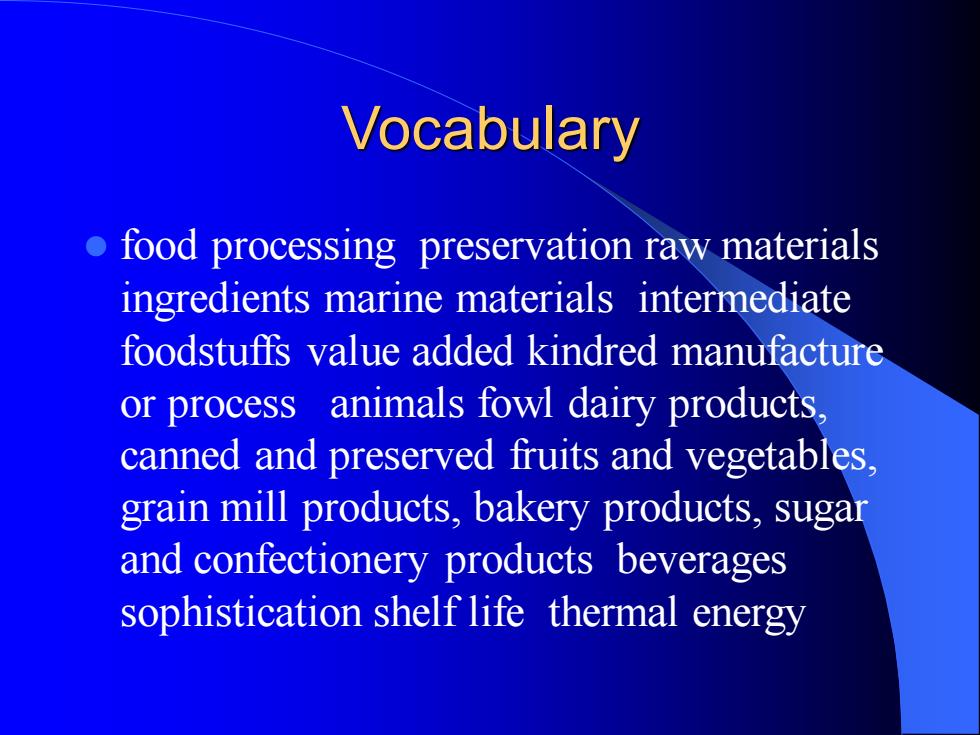
Vocabulary ⚫ food processing preservation raw materials ingredients marine materials intermediate foodstuffs value added kindred manufacture or process animals fowl dairy products, canned and preserved fruits and vegetables, grain mill products, bakery products, sugar and confectionery products beverages sophistication shelf life thermal energy
Vocabulary ⚫ food processing preservation raw materials ingredients marine materials intermediate foodstuffs value added kindred manufacture or process animals fowl dairy products, canned and preserved fruits and vegetables, grain mill products, bakery products, sugar and confectionery products beverages sophistication shelf life thermal energy
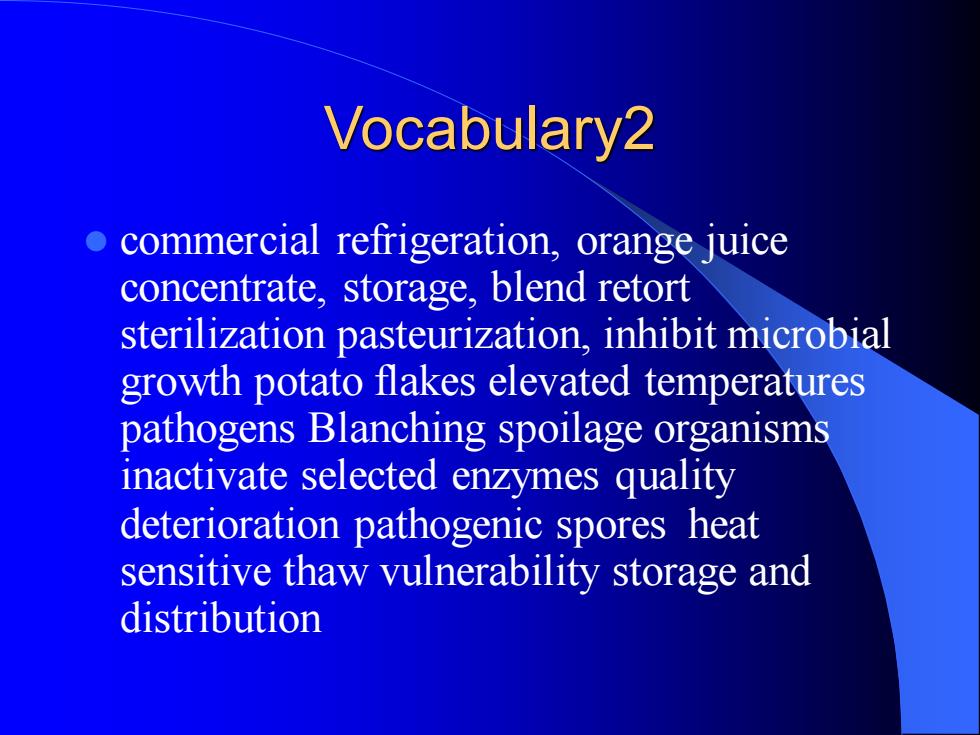
Vocabulary2 ⚫ commercial refrigeration, orange juice concentrate, storage, blend retort sterilization pasteurization, inhibit microbial growth potato flakes elevated temperatures pathogens Blanching spoilage organisms inactivate selected enzymes quality deterioration pathogenic spores heat sensitive thaw vulnerability storage and distribution
Vocabulary2 ⚫ commercial refrigeration, orange juice concentrate, storage, blend retort sterilization pasteurization, inhibit microbial growth potato flakes elevated temperatures pathogens Blanching spoilage organisms inactivate selected enzymes quality deterioration pathogenic spores heat sensitive thaw vulnerability storage and distribution
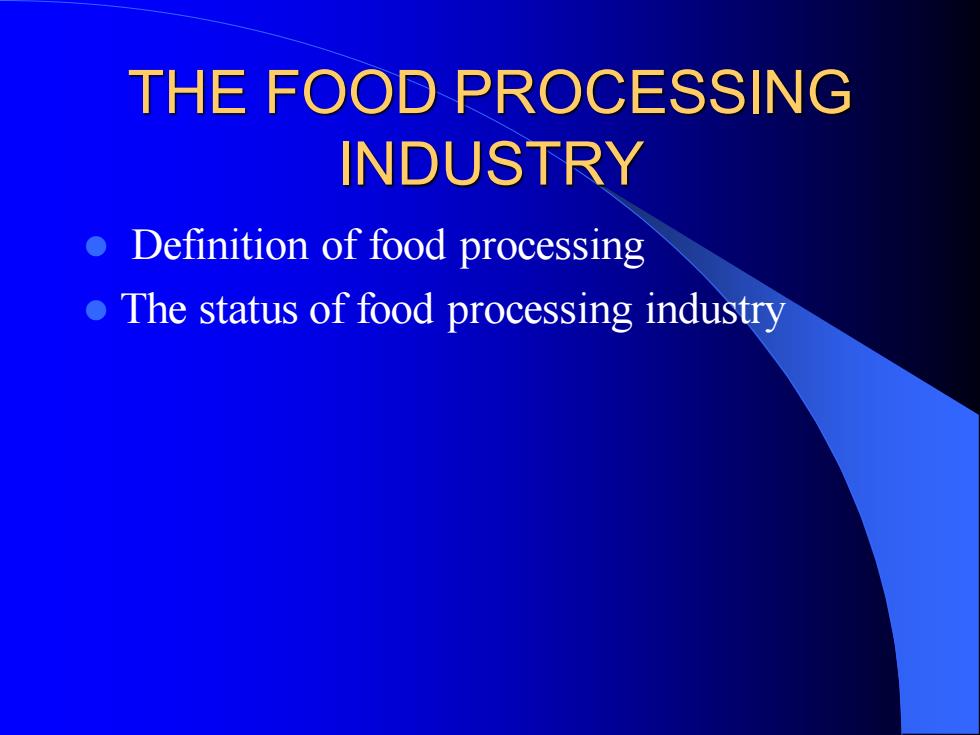
THE FOOD PROCESSING INDUSTRY ⚫ Definition of food processing ⚫ The status of food processing industry
THE FOOD PROCESSING INDUSTRY ⚫ Definition of food processing ⚫ The status of food processing industry
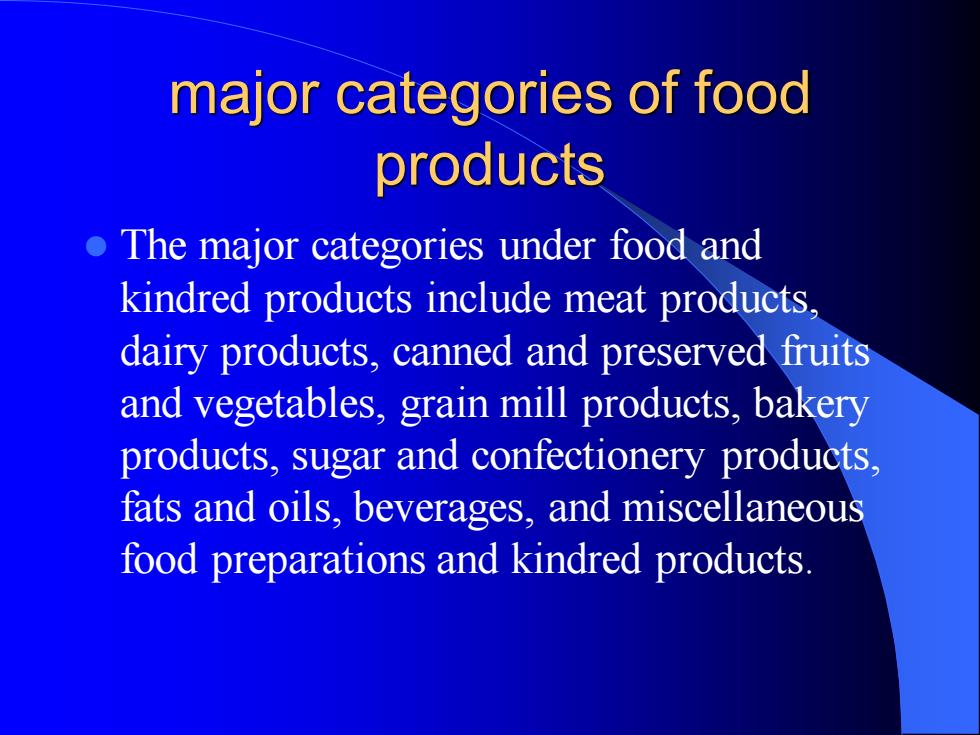
major categories of food products ⚫ The major categories under food and kindred products include meat products, dairy products, canned and preserved fruits and vegetables, grain mill products, bakery products, sugar and confectionery products, fats and oils, beverages, and miscellaneous food preparations and kindred products
major categories of food products ⚫ The major categories under food and kindred products include meat products, dairy products, canned and preserved fruits and vegetables, grain mill products, bakery products, sugar and confectionery products, fats and oils, beverages, and miscellaneous food preparations and kindred products
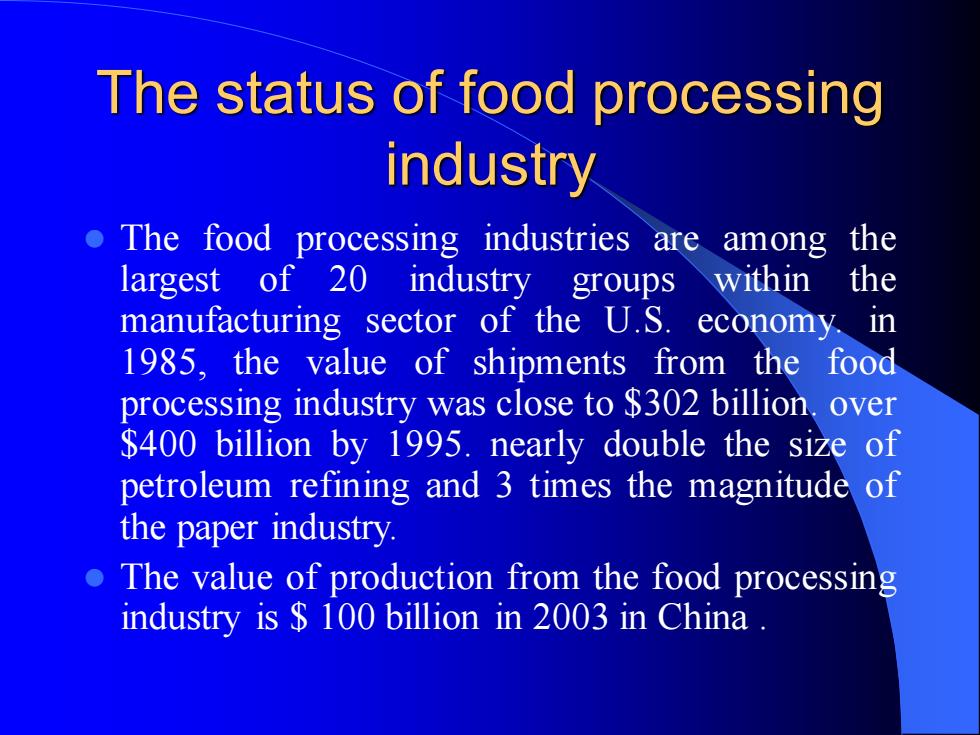
The status of food processing industry ⚫ The food processing industries are among the largest of 20 industry groups within the manufacturing sector of the U.S. economy. in 1985, the value of shipments from the food processing industry was close to $302 billion. over $400 billion by 1995. nearly double the size of petroleum refining and 3 times the magnitude of the paper industry. ⚫ The value of production from the food processing industry is $ 100 billion in 2003 in China
The status of food processing industry ⚫ The food processing industries are among the largest of 20 industry groups within the manufacturing sector of the U.S. economy. in 1985, the value of shipments from the food processing industry was close to $302 billion. over $400 billion by 1995. nearly double the size of petroleum refining and 3 times the magnitude of the paper industry. ⚫ The value of production from the food processing industry is $ 100 billion in 2003 in China
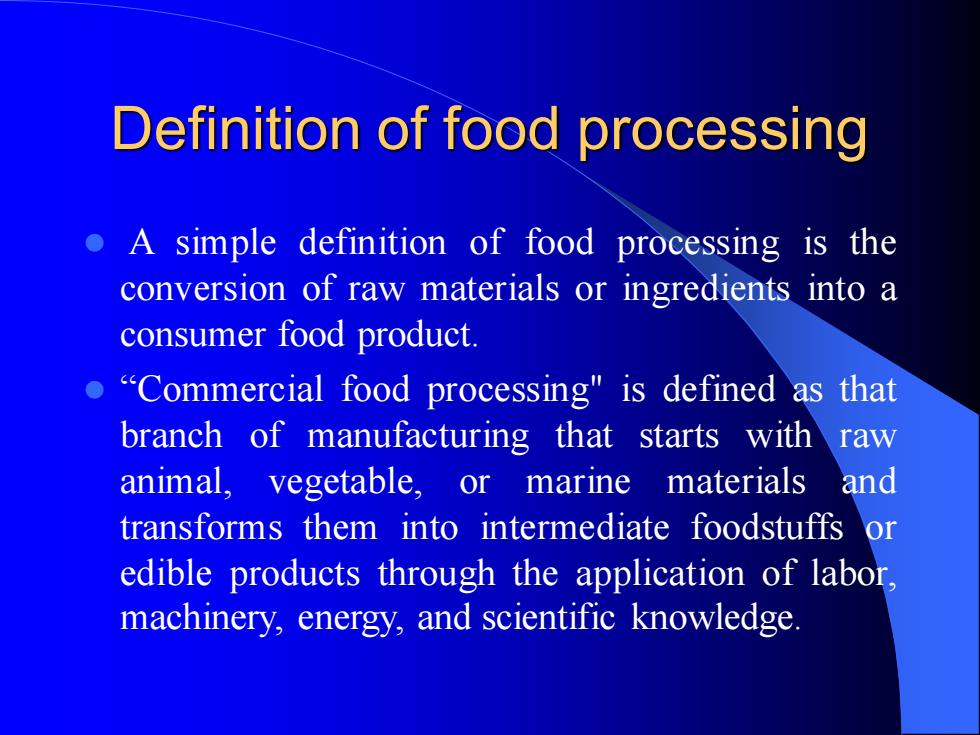
Definition of food processing ⚫ A simple definition of food processing is the conversion of raw materials or ingredients into a consumer food product. ⚫ “Commercial food processing" is defined as that branch of manufacturing that starts with raw animal, vegetable, or marine materials and transforms them into intermediate foodstuffs or edible products through the application of labor, machinery, energy, and scientific knowledge
Definition of food processing ⚫ A simple definition of food processing is the conversion of raw materials or ingredients into a consumer food product. ⚫ “Commercial food processing" is defined as that branch of manufacturing that starts with raw animal, vegetable, or marine materials and transforms them into intermediate foodstuffs or edible products through the application of labor, machinery, energy, and scientific knowledge
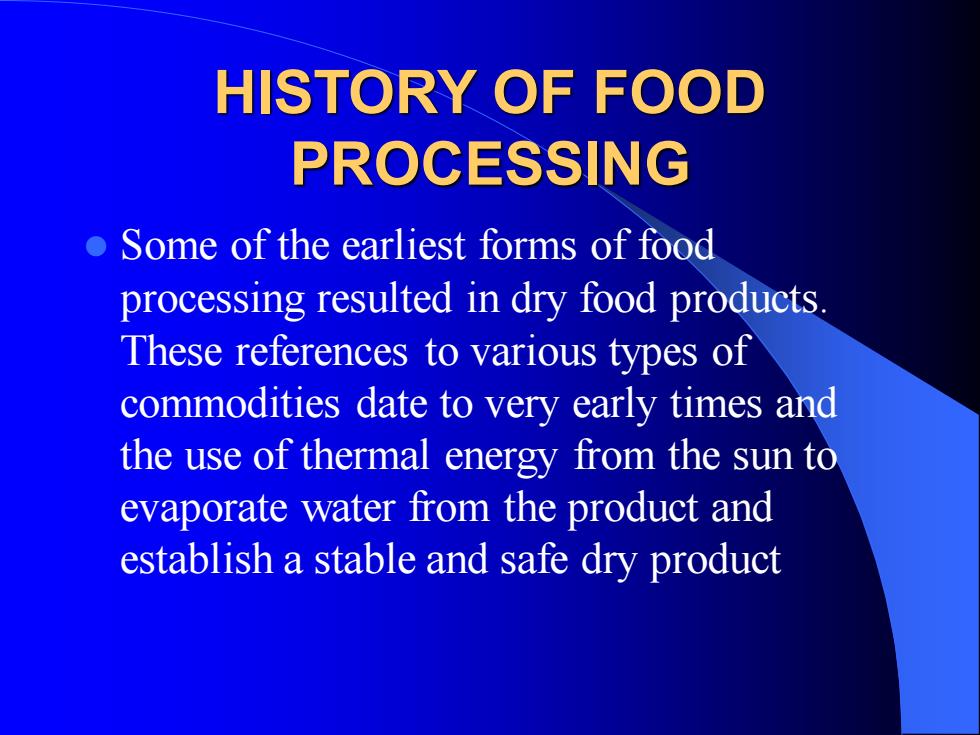
HISTORY OF FOOD PROCESSING ⚫ Some of the earliest forms of food processing resulted in dry food products. These references to various types of commodities date to very early times and the use of thermal energy from the sun to evaporate water from the product and establish a stable and safe dry product
HISTORY OF FOOD PROCESSING ⚫ Some of the earliest forms of food processing resulted in dry food products. These references to various types of commodities date to very early times and the use of thermal energy from the sun to evaporate water from the product and establish a stable and safe dry product
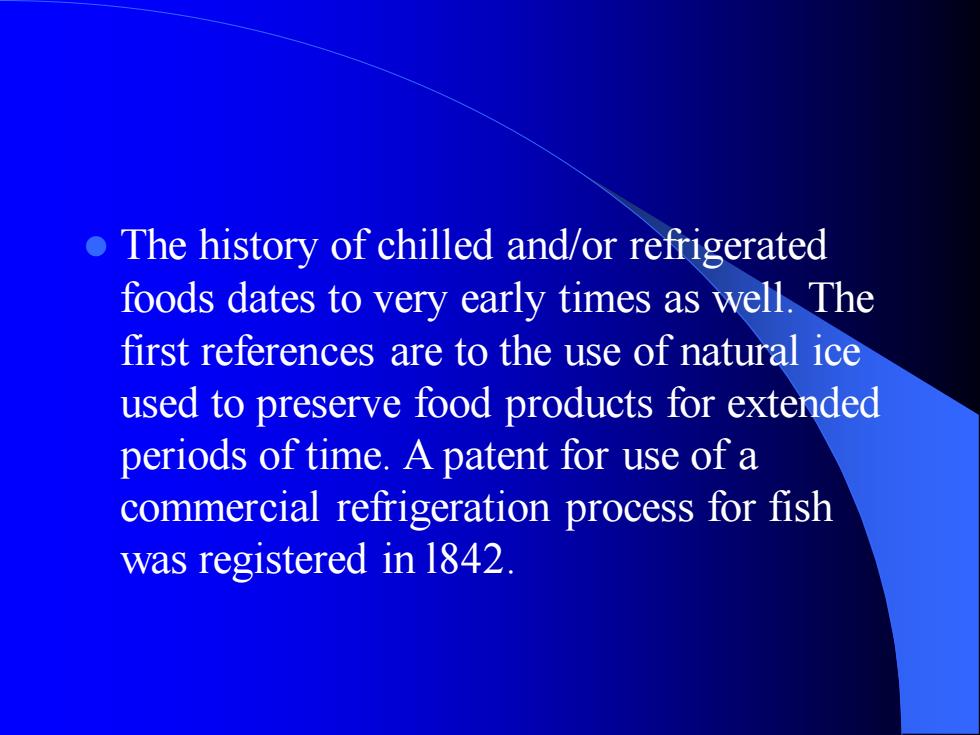
⚫ The history of chilled and/or refrigerated foods dates to very early times as well. The first references are to the use of natural ice used to preserve food products for extended periods of time. A patent for use of a commercial refrigeration process for fish was registered in l842
⚫ The history of chilled and/or refrigerated foods dates to very early times as well. The first references are to the use of natural ice used to preserve food products for extended periods of time. A patent for use of a commercial refrigeration process for fish was registered in l842
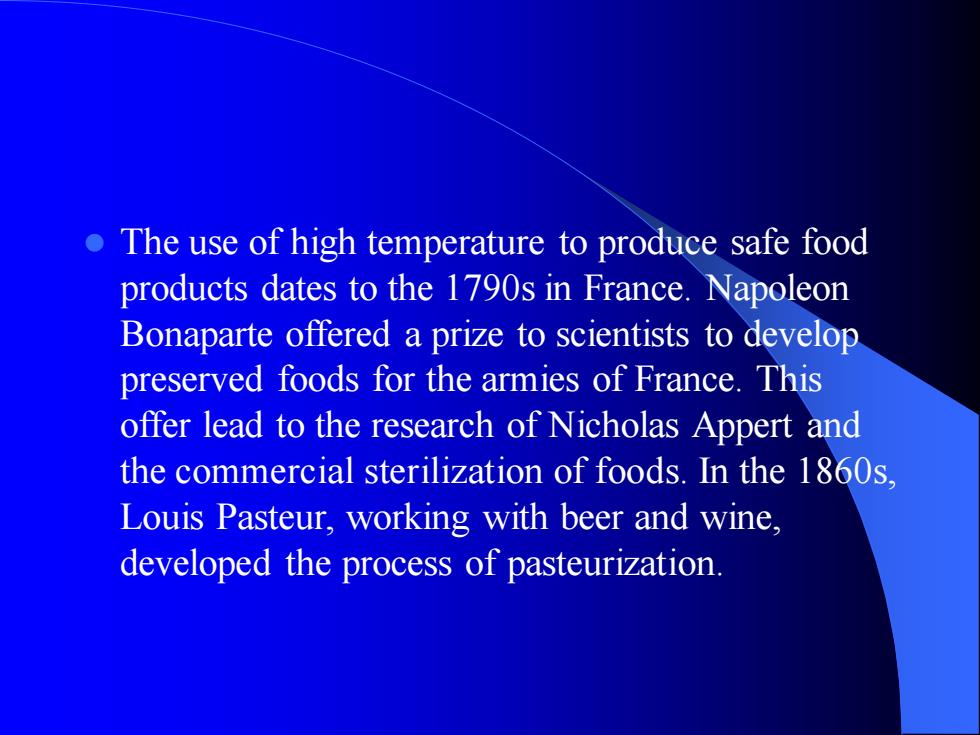
⚫ The use of high temperature to produce safe food products dates to the 1790s in France. Napoleon Bonaparte offered a prize to scientists to develop preserved foods for the armies of France. This offer lead to the research of Nicholas Appert and the commercial sterilization of foods. In the 1860s, Louis Pasteur, working with beer and wine, developed the process of pasteurization
⚫ The use of high temperature to produce safe food products dates to the 1790s in France. Napoleon Bonaparte offered a prize to scientists to develop preserved foods for the armies of France. This offer lead to the research of Nicholas Appert and the commercial sterilization of foods. In the 1860s, Louis Pasteur, working with beer and wine, developed the process of pasteurization